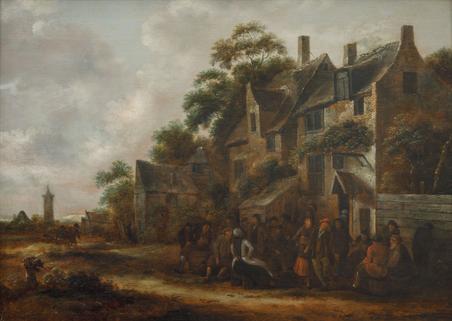Lot #159

Nicolaes (Klaes) Molenaer (1626/1629–1676)
Villagers Meeting in front of the Inn
Estimate: 100,000 CZK - 200,000 CZK
Starting price: 70,000 CZK
73,000 CZK
Klaes (Nicolaes) Molenaer (ca. 1626, Haarlem – 1676, Haarlem) occupies an important place among Dutch landscape painters of the 17th century. The native of Haarlem became a recognised artist of his time, following the family tradition - his brothers Bartholomew and Jan Miense Molenaer were also respected painters. Klaes began his artistic career in Amsterdam, where he studied under the famous landscape painter Jacob van Ruisdael from 1637 to 1648. Although he executed his first works as early as 1644, he fully developed his talent after his return to Haarlem in 1651, where he became a member of the esteemed painting guild of St. Lucas. Molenaer's work focused mainly on landscape painting, often drawing inspiration from Haarlem and its surroundings. His winter scenes, in which he depicted frozen canals lined with city walls and various characters, gained particular popularity. In addition to winter motifs, his works also feature summer scenes depicting rural festivities or meetings of villagers. These scenes, often situated around inns, stand out for their careful rendering of details, and their significant characters add dynamics to the otherwise peaceful rural landscape. The presented work, belonging to this group, depicts a rural company in front of an inn. It shows Molenaer's ability to combine landscape painting with figurative motifs, creating valuable evidence of Dutch Golden Age painting.
The red wax seal on its reverse tells about the history of the painting. The squared coat of arms with a jewel, flanked by heraldic gryphons holding banners, represents a proprietary seal from the late 17th or 18th century. Although it has not yet been possible to determine the specific owner, it is clear that the painting was part of the collection of one of the European aristocratic families.
The work is included in the RKD (Nederlands Instituut voor Kunstgeschiedenis) database (v photo).




